Review: Leak Stereo 130 And CDT – When I saw the new LEAK Stereo 130 amplifier with matching LEAK CDT CD transport for the first time a while ago in a press release, my hi-fi heart made a happy leap. In 2011 a colleague gave me an old LEAK Delta 30 integrated amplifier. That stubbornly designed little amplifier from the late days of the transition between tube and solid state still worked, and despite showing a few signs of aging I wrote this enthusiastic vintage review about it. LEAK had not existed for a long time, but now this iconic brand is back on the market. Not with the crazy high-end price tags, but affordable and equipped with a number of interesting contemporary gadgets. I had to and would put it to the test, and so it happened.
A Little History
Harold Joseph LEAK founded the brand named after him in 1934 and he became one of the pioneers in high-quality music reproduction. Some of his feats were sadly lost in the dusty recesses of hi-fi history, but it was one of his designs – the Point One amp series from 1945 -which was the first to have a harmonic distortion below 0.1%. The company also innovated in speaker technology. The successful 1961 LEAK Sandwich loudspeaker had a woofer developed by mercenary Don Barlow, the cone of which consisted of a layer of foamed polystyrene sandwiched between two sheets of aluminum foil, resulting in an extremely light and rigid loudspeaker membrane. A similar principle is still used today by brands such as Podszus-Görlich and Zellaton.
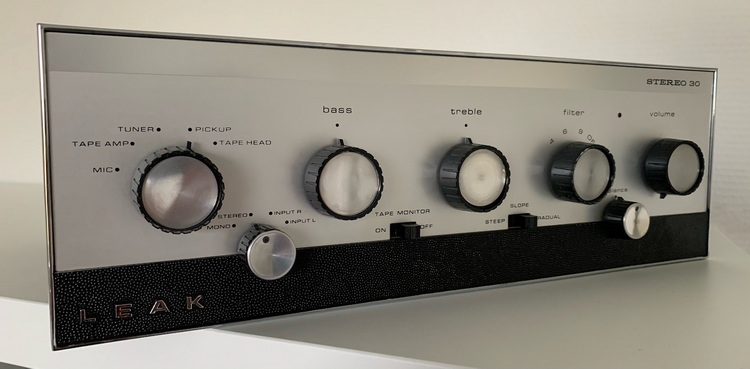
In 1969 the brand was sold to the Rank Organization, a British entertainment company that made films and television productions, as well as radios, televisions and copiers – the Rank in Rank-Xerox, for the older young readers. In the late 1970s, competition from the Japanese audio industry became too fierce, and the LEAK brand name quietly disappeared from the market without much residual glory. Definitely it seemed, but nothing could be further from the truth and a ball can roll in a strange way in hi-fi land. After 40 years of slumber, the LEAK brand name was acquired by IAG (International Audio Group). This Chinese investor has the hi-fi heart in the right place and was previously successful in bringing other British hi-fi classics back to the market, including Quad, Wharfedale and Mission. And now LEAK.
LEAK Stereo 130 Integrated Amplifier
In the past you could use the type number of LEAK amplifiers to power 8? read: the Stereo 30 from 1963 had a power of 2 x 15 Watt. The new Stereo 130 breaks with that tradition and delivers 2 x 45 watts per channel in Class AB. I don’t call the historic Stereo 30 for nothing, because the design of the new Stereo 130 is based on that in detail. The narrow housing, the black band at the bottom of the otherwise aluminum-colored front, with the original name logo at the bottom left. The rotary knobs with a ribbed black plastic cylinder around an aluminum-colored heart, the volume and source selection knobs on the right and left outside with the knobs for tone control and balance in between, even the (now available at an extra cost) walnut casing. The ‘ new ‘design is really unbelievably retro, but I am amazed at how current it still looks in 2020, certainly the version without wooden casing that I received for review.
There are also differences. The original rotary knobs had a small tip that made it easier to read the position from the listening seat, and the headphone output – which, incidentally, only appeared on the LEAK Stereo 30+ – was hidden behind a small ‘rotary knob’ that was more of a ‘rotary cap’. you had to remove it to pop in the headphones. Furthermore, the new Stereo 130 has a ‘direct’ button with which you bypass the entire – incidentally nicely subtle – tone control, which also results in a slightly more transparent reproduction. On the far right is the stand-by button that lights up softly red at rest and lights up brighter when switched on. The source selector now features a ring of small orange LEDs that indicate which source you have selected.
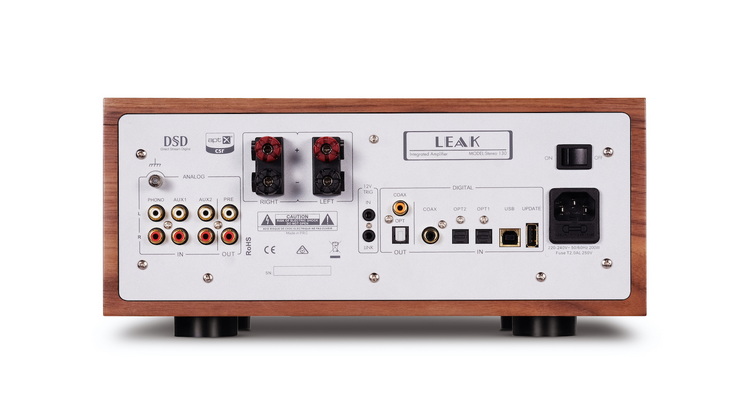
At the back you will find the bigger differences. For example, the Stereo 130 is equipped with a secured IEC net entrance with the real on / off button above it. Where the old Stereo 30 (+) had two inputs for record players, on the Stereo 130 there is only one (MM), and the microphone inputs (!) Have also disappeared. Instead, there are two analog Aux inputs and a stereo pre-out, one pair of speaker connections and an extensive digital connection panel that includes not only a coaxial, two optical and a USB-B digital input, but also a coaxial and optical. digital output. There is no network connection, the LEAK Stereo 130 does not have a streamer on board. The da-converter in the Stereo 130 supports resolutions up to 384kHz (PCM) and DSD256 via USB, but no MQA. The coaxial and optical connection are capped at 192kHz. A USB-A port for updates and a 12 Volt trigger input and output top it off. This allows the LEAK Stereo 130 to form the heart of any modern hi-fi system. As icing on the cake, the Stereo 130 has a Bluetooth receiver on board (with external antenna) that supports aptX and Apple AAC.
Leak Stereo 130 And CDT-Transport
The LEAK CDT CD transport is not a CD player, but a transport. This means that it does not contain a da-converter and that it does not have analog audio outputs. On the rear panel, in addition to a secured IEC net entrance and the on / off button, we find a pair of trigger connections to switch it on and off in sync with the Stereo 130, and an optical and coaxial S / PDIF digital output. The CDT uses a smooth-running and extremely silent ‘slot-loading’ Red Book CD drive. G Year Old n CD-ROM drive, therefore, as nowadays is more or less common, but also, therefore, g Year Old n buffer where the data is stored in first read. The use of such ‘ n buffer can be an advantage when playing seriously damaged CD’ s or CD-recordables that have become less readable over the years, but in practice I have not come across any CD that was not played properly.
On the front is a relatively small but easy to read monochrome dot-matrix LCD display with a very wide viewing angle. The control buttons are accurate to use, but I feel that a very little intuitive operation has been sacrificed to the sleek design. It will take some getting used to, but I hit the eject button several times when I actually wanted to start playback with the play / pause button next to it. To the left of the control buttons is a USB-A input where you can insert a memory stick with music files. There are a few caveats to this. The stick must be FAT16 or FAT32 formatted, and may only contain WAV, MP3, WMA or AAC format files, with a maximum resolution of 48kHz.
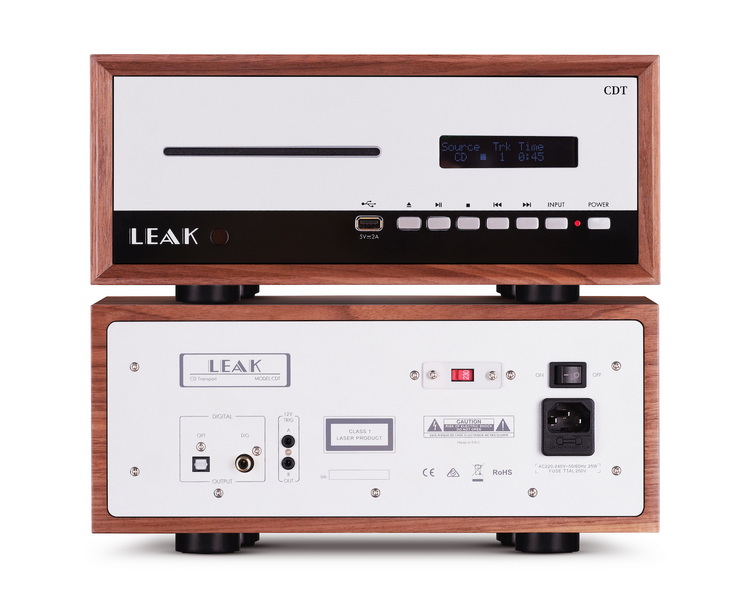
This is a surprising and nice extra function, but I find the operation a bit unclear. Playback starts as soon as you insert the stick into the USB-A socket and select the USB input with the ‘input’ button. Choosing a favorite album or song before playing is therefore not really an option. Via the remote control you can choose with certain keys to search or skip within the main folder or within the currently played folder, but the display does not show which mode you are in and the displayed metadata is not always clear due to the limited space. My advice is therefore to use this function, for example, for a stick full of background music, of which the songs are all in one folder, and thus ensure uninterrupted background music enjoyment for a whole party.
Leak Stereo 130 And CDT: Deploy and Listen
Most of the sound assessment took place at my office, because that’s where I listen to music most hours a day. My KEF LS50 speakers in nearfield setup were connected to the LEAK Stereo 130 with AudioQuest CV-4 speaker cables, I connected the CDT with a coaxial AudioQuest Hawkeye digital interconnect, my Mac mini with an AudioQuest Carbon USB and and the Bluesound Node with a AudioQuest Vodka Optical. The devices were within reach in this setup, so I hardly used the remote control. Of course I took a look at how it worked and a few trifles struck me. The fact that the remote control can be used for both the Stereo 130 and the CDT provides a mixture of control buttons that takes some getting used to. With the bottom two buttons you first have to choose whether you want to operate the amplifier or the CD transport, which is not useful if you want to change the volume on the amplifier after starting a CD or skipping to another track. I can understand why: some buttons have a double function – for example ‘volume +’ for the amplifier, which is also used for ‘file up’ during playback from a USB stick – but you quickly get it wrong and that is a shame. If you buy both devices, you also have two remote controls that you could use separately. Make sure to mark which squeeze cat is for which device. Anyway, the operation is of course a bit subordinate to how things sound.

I first let the Stereo 130 play the unsurpassed Isotek Burn-in CD on a soft level for two days to rinse off the novelty and to stabilize the digital part of the circuit, and then I got down to it. The Stereo 130 may have a typical retro British appearance, but there is no question of a dark brown retro reproduction that typified British hi-fi in the 60s and 70s. The LEAK Stereo 130 sounds dynamic, fast and extremely transparent. I can imagine that with a slightly cooler speaker cable and strictly neutral speakers you would go a little bit in the analytical direction, but with the CV-4 and the LS50s the result was infectious, nice and open and wonderfully spacious. The presentation was a bit more forward than I am used to from my Peachtree Decco65 in this place, and if something could have had just a little bit of extra color, it was layer. But you can easily change that with the tone control – albeit with a minimal loss of transparency. The whole was also rhythmically right.
I started with the Bluetooth playback, because that function is especially appreciated by younger users today. The pairing went very smoothly and the reproduction was in my ears pretty good for what you would expect from a compressed digital signal. Tonally it was fine, with a slight emphasis on the midrange, a fair amount of detail and a decent dynamic. However, it was no surprise that it could be even better via an uncompressed digital source, I had not even expected otherwise. The considerably better playback via the Bluesound Node and the CDT drive did not differ much from each other, but I still preferred CD playback via the CDT quite quickly.
A favorite CD to test new hi-fi is still… And Poppies From Kandahar by Jan Bang. This wonderful and fantastically produced album has the war problems in Afghanistan as its underlying theme, but it never becomes finger-pointing or violent. Very exciting, because it is one large musical radio play that takes place in 12 largely instrumental tracks and leaves a lot to the imagination of the listener. Favorite track? Passport Control, in which a subcutaneous but uplifting beat drives an increasingly full sound image to a long climax at the end of the more than nine minutes long track. The nearfield setup of the LS50s created a beautiful and strong bubble of sound that completely surrounded me and which I was completely absorbed in.
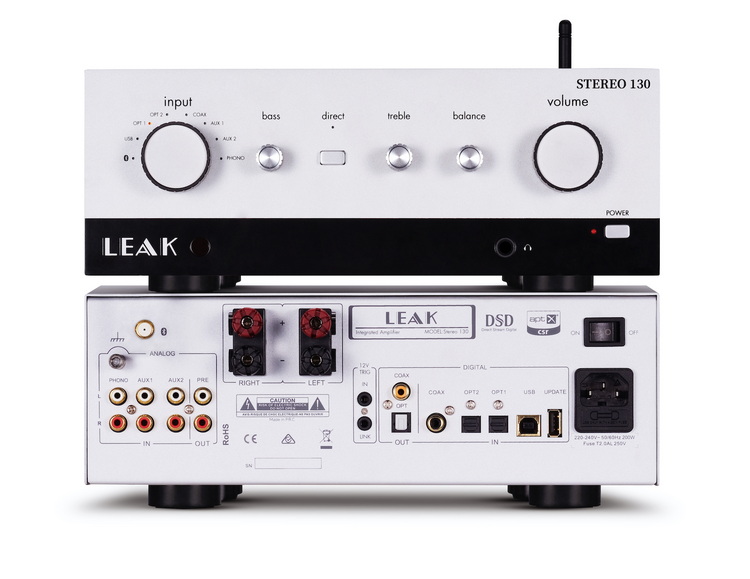
The somewhat forward placement and generous spaciousness also held up well in the large set downstairs on my prototype Kharma speakers. Given the enormous price difference, this is no small achievement. In the large set I tested the MM phono stage, with a simple but excellent performing AudioTechnica AT95E element in the Thorens TD 125. I am delighted to say that the discreetly constructed phono stage in the Stereo 130 is of excellent quality, and the level of close to the digital inputs. With a better element, even better results can undoubtedly be achieved, but of course also with an external phono stage of some stature. The built-in headphone output is excellent, but here too it is not comparable to a separate headphone amplifier.
Conclusion
The LEAK Stereo 130 and the CDT CD transport form a classic looking but fully performing two-unit by today’s standards at a surprisingly affordable price. Future price increases aside, for less than 1500 euros – just a little more if you want the stunning walnut console for it – a set that, in combination with the right speakers, really plays the stars of the sky. Obviously, the purchase of the CDT drive is not mandatory, but if you still play CDs, it is certainly worth considering. It works quickly and smoothly, runs really quietly and, in combination with the da-converter in the Stereo 130, ensures a contagious, spacious and light-footed reproduction. Because of the somewhat clumsy control of USB playback capability unfortunately he loses n ét half a star score.
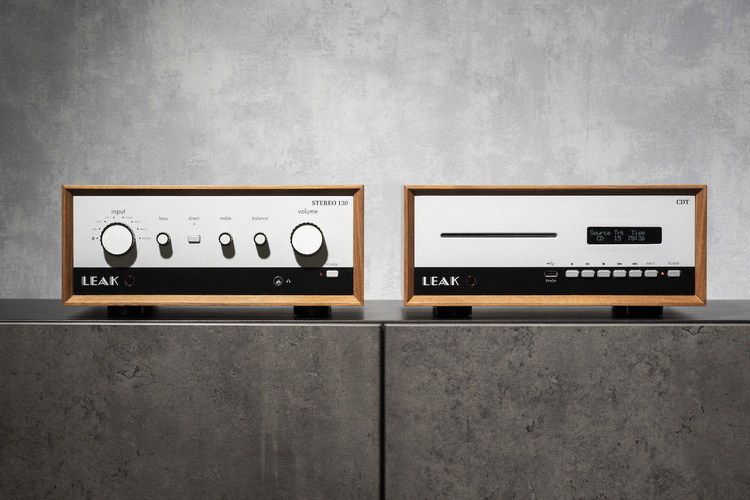
The Stereo 130 integrated amplifier is a treat to see and hear. It is well built, sounds modern and open, and offers plenty of digital and analog connectivity options including Bluetooth. As icing on the cake, he has an excellent MM phono stage on board. However, here too, just half a star off, mainly due to the somewhat clumsy mix of functions on the otherwise beautiful remote control with a metal front plate, and the small note regarding the combination with certain cables and speakers. Nevertheless a more than excellent and well-deserved score. Don’t let its compact dimensions fool you, this snappy performing set has what it takes to become a true retro classic just like its illustrious predecessor.






